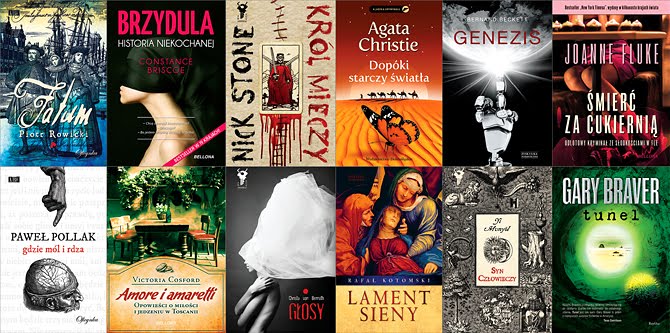To nic odkrywczego. Strach pchał naszych praprzodków do odkryć i wynalazków. I jest to proces ciągły, sam mechanizm nie zmienił się od tysięcy lat, zmieniły się tylko źródła strachu. Nikt już nie obawia się piorunów (no chyba że stoi pod samotnym drzewem podczas burzy) ani tygrysów szablozębnych. Są nawet tacy, którzy je lubią – poniewczasie. I to chyba dla nich zostały wymyślone horrory. Ludzie bez adrenaliny marnieją, ona jest jak woda dla kwiatu. Graham Masterton od dawna należy do grupy najlepszych ogrodników. Ten facet zna się na straszeniu. Chyba ze świecą można szukać takich, którzy jeszcze się o tym nie przekonali na własnej skórze. Strach wymaga dobrego opakowania. Gdy prezentuje się kiepsko, wówczas niebezpiecznie zbliża się do groteski. I następuje efekt niezamierzony. Dlatego okładki horrorów to wcale nie jest bułka z masłem. Grafik ma do dyspozycji tylko jedną stronę, a autor aż kilkaset.
A tak swoją drogą – czy ktoś mi wytłumaczy, dlaczego właśnie w kulturze anglosaskiej horror jest tak popularny? Trudno wymienić wszystkich znakomitych anglojęzycznych twórców tego gatunku. Poza Mastertonem miałam zawodowo do czynienia chociażby z Ramseyem Campbellem i Garym Braverem. Jak każdy człowiek – ja też potrzebuję odrobiny adrenaliny na co dzień.
It's nothing insightful. Fear pushed our ancestors towards their discoveries and inventions, and it is an ongoing process. The mechanism itself hasn't changed for thousands of years. What has changed, however, are the sources of fear. Now, no one fears lightning (unless they’re standing under a solitary tree during a thunderstorm) or sabre-toothed tigers - there are even those who like them – belatedly. And it is probably those people for whom horror was invented, people who languish without adrenaline, it’s kind of like water for a flower. Graham Masterton has been one of the best gardeners out there for quite some time now; this guy knows a thing or two about scaring people. In fact, it would probably be really hard to find someone who hasn't had the opportunity to experience fear for themselves. Fear requires good packaging. When it's not presented well enough, it comes dangerously close to the grotesque and an entirely unwanted effect occurs. That is why horror covers are no piece of cake. The graphic designer only has one page, whereas the author has a couple of hundred.
And by the way – can anyone explain why it is precisely the Anglo-Saxon culture in which horror is so popular? It's hard to mention all of the great horror writers of the English language. Aside from Masterton, I dealt professionally with Ramsey Campbell and Gary Braver, just like any other person, I also need my daily dose of adrenaline.

